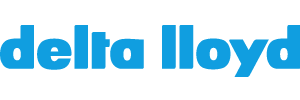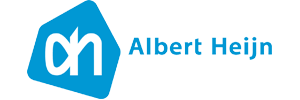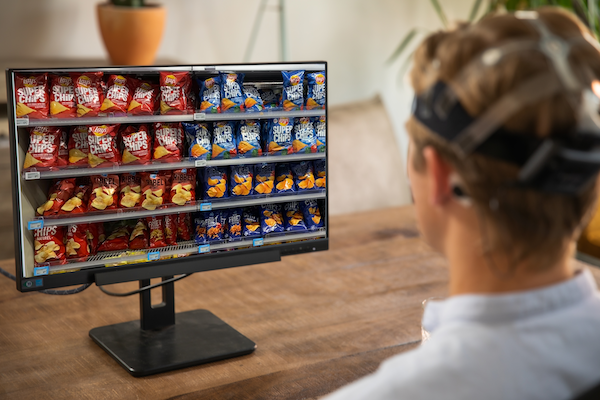Neuro Shelf Layout Testing
-
Measure which shelf layout is the most brain-friendly
-
Measured with Eye Tracking (ease of search) and EEG (workload and purchase activation)
-
10 days lead time







Applications
When setting up a shelf, you want every product segment to be in the right place. However, how is this determined? There is little point in asking questions: a shelf layout must intuitively match the customer's lightning-fast search and choice processes.
A Neuro Shelf Test with Eye Tracking and EEG helps you test different shelf variants on the success metrics that really matter: ease of search and purchase activation. This way, you can predict exactly which layout is the most brain-friendly and sales-enhancing.

Why a brain-friendly shelf is crucial for the retailer, the brands and the shopper
In each domain, the customer walks in with numerous conscious and unconscious expectations of how products are classified. The better a shelf matches these intuitions in our brain, the more success the entire category achieves. This is due to the psychological effect of fluency: the easier something is to process, the more we like it. Within a store, this positive fluency effect leads to happier customers and fuller shopping baskets. Thus everyone wins!

Test the shelf factors that matter
The more a shelf reflects the mental categories of a customer's mind, the more brain-friendly it becomes. With our Neuro Shelf Test, we can test the influence of many factors, such as:
- Position of product segments relative to each other
- Position and content of communication
- Classification by brand
- Classification by size
- Classification by purpose
- Classification by price

Or discuss the possibilities with Tim, our Lead Consultant
View availability and schedule an online appointment
"Very nice to see how this eye tracking research works. Impressed how well it is arranged and what team you have there."

How it works
We are not aware of most of our shelf intuitions, yet they influence how our eyes navigate through the shelf and how we expect the spatial arrangement of the products. These expectations cannot be questioned by traditional market research such as surveys and interviews, because it can only capture a small number of conscious expectations.
Neuromarketing research on the shelf directly measures how the shopper handles a shelf. Eye Tracking data can reveal search intuition and the speed with which the target product can be found. EEG also provides insights into the cognitive workload and buying activation in the brain.
Compare shelf variants
In a Neuro Shelf Test, we test the effectiveness of multiple shelf layouts. For each variant, we also test two characteristic forms of shelf interaction:
- Targeted search (find a specific brand, segment, or purpose of use)
- Free choice (look around freely and choose a product you like)
This allows us to measure the performance of targeted and free searches for each shelf variant. The optimal shelf layout scores are high on both forms of interaction.


Success factors
With Eye Tracking and EEG we gain insight into crucial factors that reveal a lot about the effectiveness of a shelf layout:
- Speed of finding the target product (Eye Tracking)
- Number of people finding target product (Eye Tracking)
- Overall Search and ease of choice (EEG)
- Overall purchase activation (EEG)
Interaction: Screen or Virtual Reality
Neuro shelf tests are possible by employing 2D shelf presentations on a screen or a completely 3D-developed retail environment in Unravel's Virtual Reality Supermarket.

Or discuss the possibilities with Tim, our Lead Consultant
View availability and schedule an online appointment


Timeline of Neuro POS Testing
Unravel carries out the neuromarketing shelf and choice research according to a proven approach so that you benefit from a fast timeline. This enables us to offer unparalleled project lead times of 10 working days.
-
Day 1-2: Kick-off & preparation
In the first week, it is determined in consultation with the client which shelf hypotheses will be tested and which stimuli are necessary. The client provides stimuli (2D images). Based on these criteria a test panel will be recruited and the research will be prepared.
-
Day 3-5: Field work
During the days of fieldwork, 20-30 respondents visit the living room lab in Utrecht. Here, they are fitted with the Eye Tracker and EEG equipment, after which they are allowed to make free and targeted choices for each shelf variant.
-
Day 6-10: Data analysis and report writing
For each shelf, we calculate the neuro performance metrics (viewing time, viewing ratio, workload and purchase activation), subdivided into free and targeted search.

Or discuss the possibilities with Tim, our Lead Consultant
View availability and schedule an online appointment


Or discuss the possibilities with Tim, our Lead Consultant
View availability and schedule an online appointment

Facts
> 80
Segments tested
10
10

Frequently Asked Questions
In the simplest research design, we test two shelves, making it an A/B test. However, we often test different hypotheses, so that we gain as much knowledge as possible from a single study in order to optimize the category.
We mean business with












